The dark histories behind famous diamonds
Dark diamonds
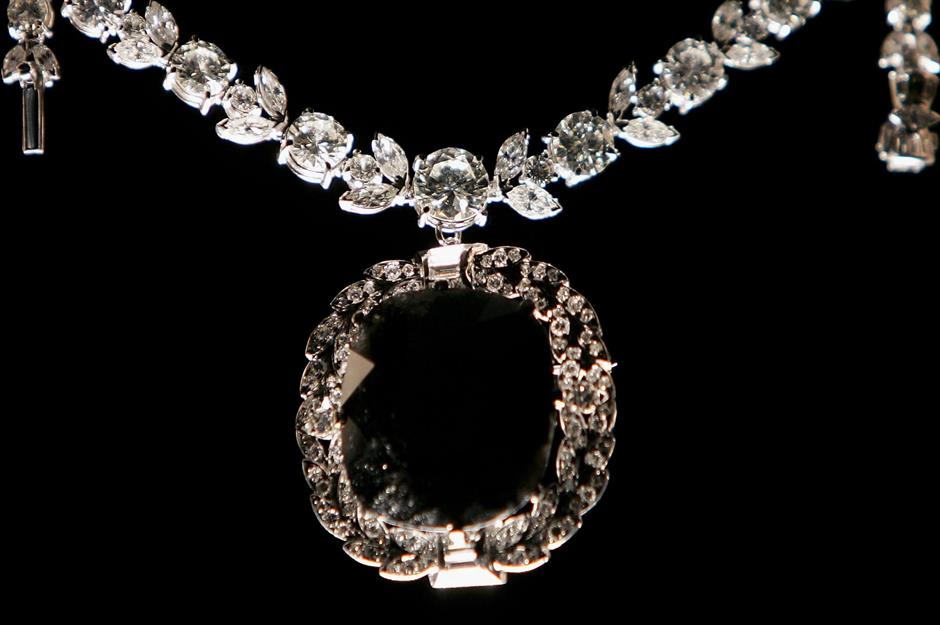
They say that diamonds are a girl's best friend, but in some instances it could be wise to steer clear of the sparkling stones. From cursed royal jewels to blood diamonds unearthed in the world's most notorious mines, read on to delve into the dark history behind some of the planet's most infamous gems. All dollar values in US dollars.
The Koh-i-Noor
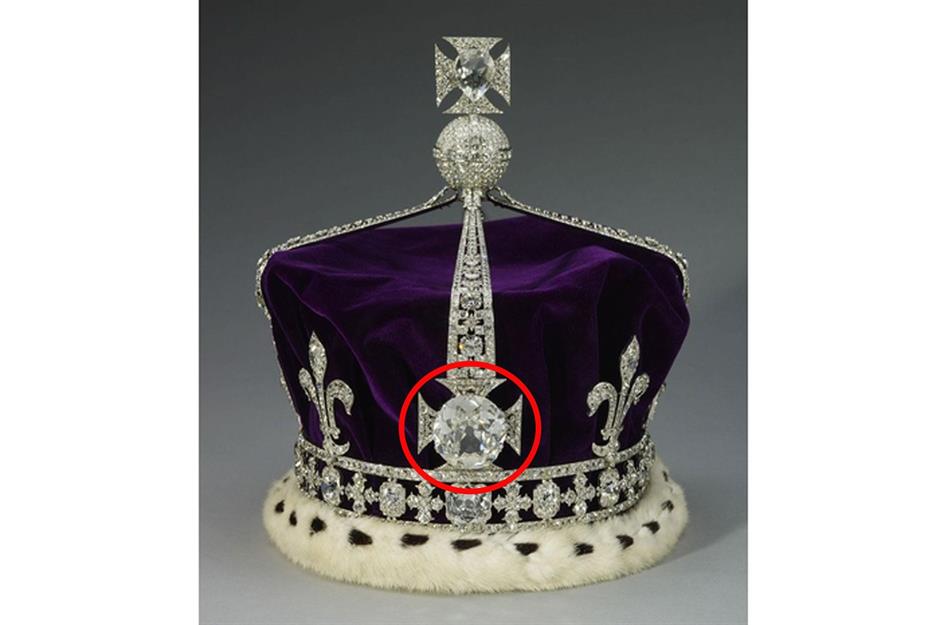
Believed to have been mined in India sometime between 1100 and 1300, the priceless 105.6-carat (21.12g) Koh-i-Noor is currently set in the crown of the UK's late Queen Mother. Its name, Koh-i-Noor, is Persian for "mountain of light," and refers to the enormous size of the diamond, which was 186 carats before being cut to add more sparkle.
However, no matter how bright this precious stone shines, it can't erase its dark past – a horrible history of colonial conquest.
The Koh-i-Noor
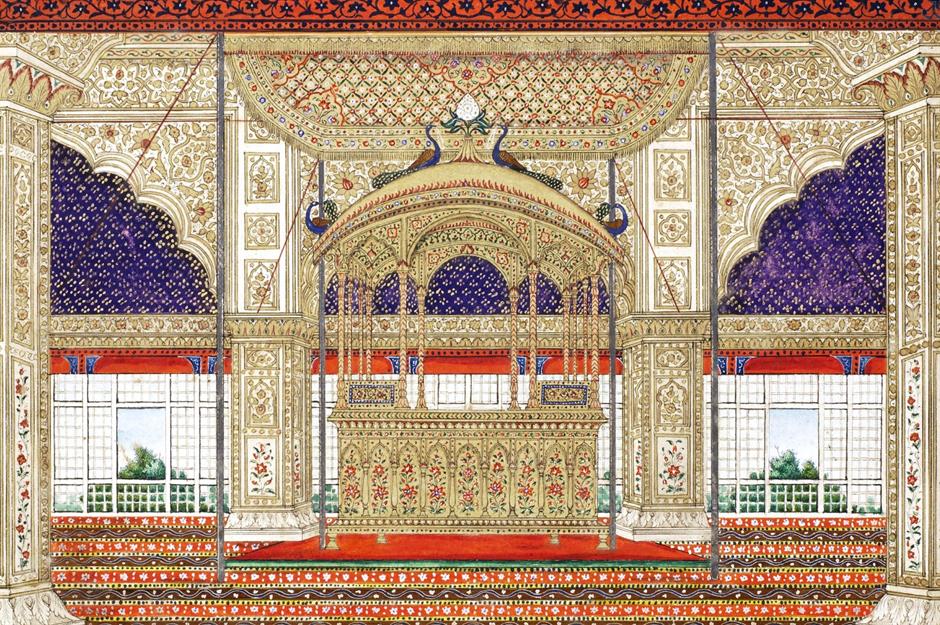
Babur, who founded the Mughal empire in 1526 and was a descendant of Genghis Khan, was the first recorded owner of the diamond. It's thought that he won the rock through the spoils of war, as would many of the stone's future owners. The stone was set in the dazzling Peacock Throne (pictured), where it stayed until 1739, the year Persian leader Nader Shah captured Delhi. Nader seized the stone, and it was he who dubbed it the 'Mountain of Light'.
Following the death of Nader in 1747, the stone was passed by his grandson on to Ahmad Shah Durrani, who founded the Durrani dynasty and is widely considered to be the founder of Afghanistan, in 1751. The dynasty lost power and fled to India in 1813, and the Koh-i-Noor was gifted to the Punjab ruler Maharaja Ranjit Singh.
The Koh-i-Noor
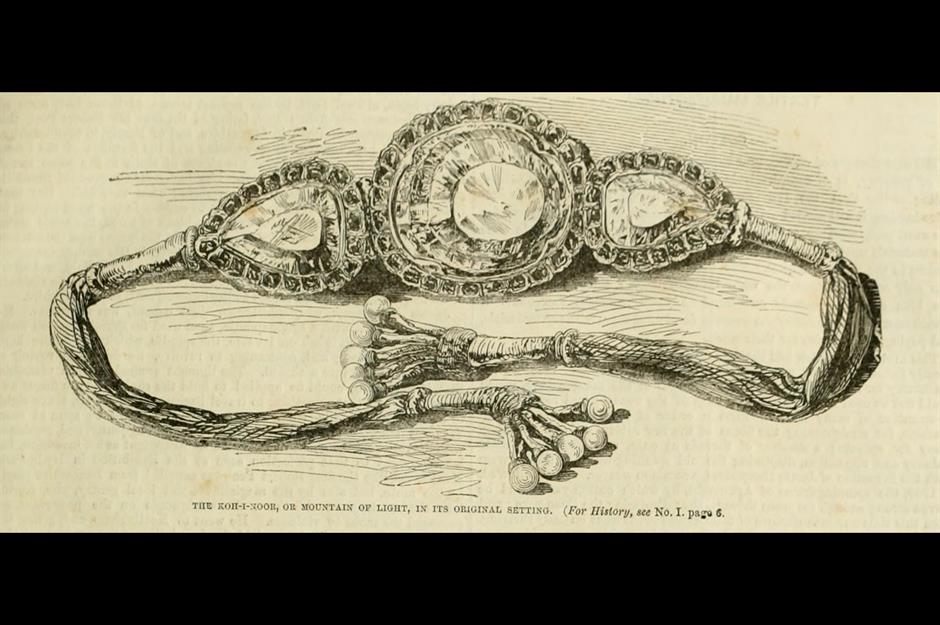
The diamond was then claimed by the East India Company when it took control of the Punjab region in 1849. The peace treaty that ended the Anglo-Sikh wars outlined that the stone should be gifted to Queen Victoria. As a result, the diamond was transported from Mumbai to England, arriving in June 1850. It became the focal point of a trio of diamonds set in a gold armlet (pictured).
The stone reportedly arrived with a letter that warned: "He who owns this diamond will own the world, but will also know all its misfortunes. Only God or Woman can wear it with impunity." The British royals bought into the superstition, and no male member of the clan has ever donned the diamond. Before being set in the current crown, the diamond featured in various other headpieces exclusively worn by female royals.
The Koh-i-Noor
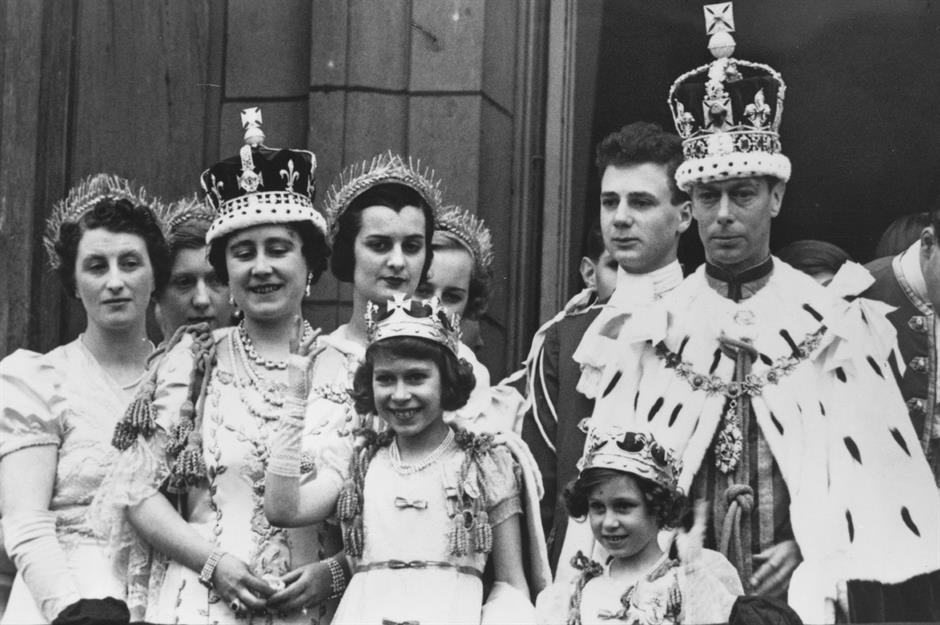
The diamond now resides in the Tower of London. Since 1947, the Indian government has campaigned for its rightful return to India, alleging that the gemstone was stolen by the British royals. The matter was taken to the Indian Supreme Court, which ruled that it couldn’t force the UK to return the diamond as it had been gifted.
In 2010, David Cameron, then the British Prime Minister, caused controversy when he told an Indian TV station that he opposed the diamond's return. He stated: "If you say yes to one, you suddenly find the British Museum would be empty. It is going to have to stay put." Queen Elizabeth II created even more uproar in 2020, when she complained about the weight of the crown that houses the Koh-i-Noor.
Despite the backlash, the British monarchy evidently has no intention of giving it back. The diamond was meant to be passed on to Queen Camilla, though she chose alternative jewels for her coronation crown, likely due to the dispute surrounding its ownership.
Pictured: Queen Elizabeth the Queen Mother wearing the Koh-i-Noor crown in 1937.
The Shah Diamond
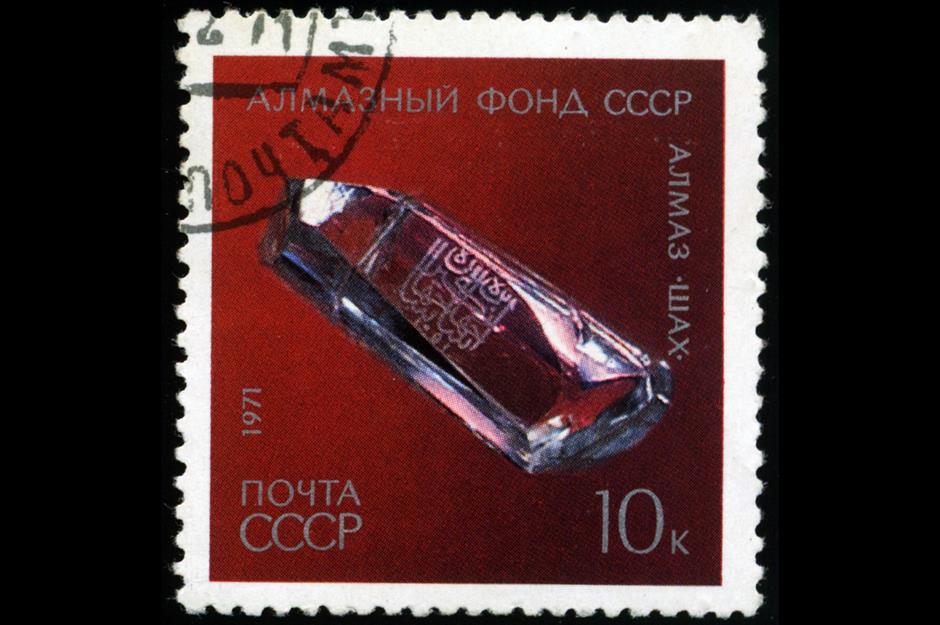
The coffin-shaped Shah Diamond weighs an impressive 88.7 carats (18g), yet its staggering size is far from its most remarkable attribute. It is inscribed with the names of three past rulers who have possessed the jewel throughout history: Nizam Shah, Jahan Shah, and Fath 'Ali Shah. These engravings are a testament to the diamond's bloody and brutal history.
The diamond has been at the heart of several wars and invasions, with each new ruler seizing the precious stone from the last.
Pictured: A Russian stamp displaying the Shah Diamond.
The Shah Diamond
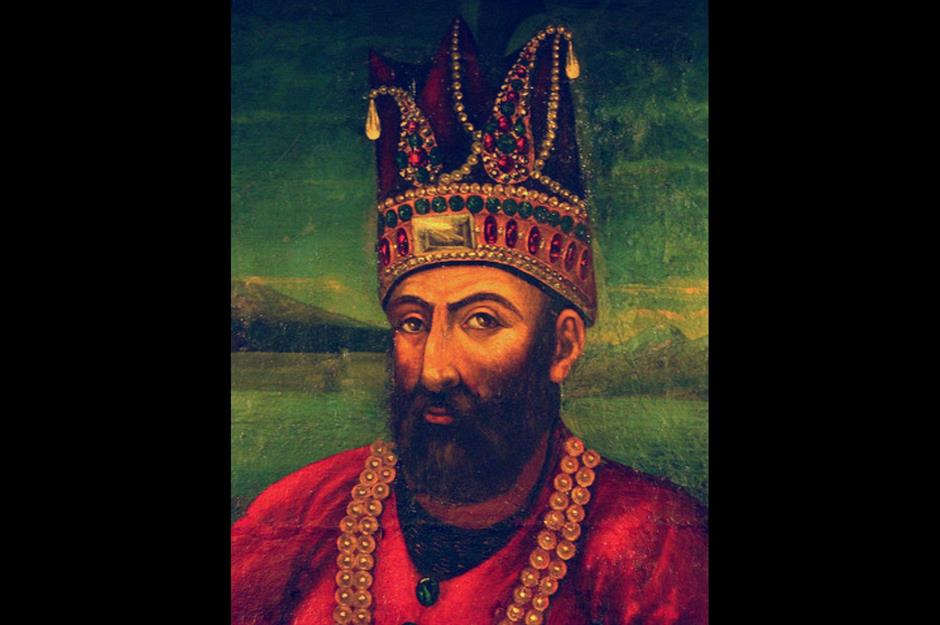
The first recorded owner of the gemstone was Nizam Shah, Sultan of Ahmednagar. In 1591, he ordered the diamond's first engraving. Unfortunately for him, the stone was seized later that year by Akbar the Great, the Emperor of Mughal India. Akbar the Great's grandson, Shah Jahan, later rose to power, and ordered the second carving on the rock in 1641. The diamond was then passed onto his son, who hung it above his throne.
The diamond was seized again in 1738 when Nader Shah (pictured), founder of the Afsharid dynasty, attacked India and took the diamond back with him to Persia. It remained there for almost a century, and in 1826 was engraved with the name of its third owner, 'Ali Shah.
The Shah Diamond

The Persian ownership of the Shah diamond ended in 1829 when Alexandr Griboyedov, a writer and Russian diplomat, was murdered in Persia. This prompted the Russians to seek revenge and, scared of the repercussions, the Shah's grandson was sent to Saint Petersburg to gift the diamond to Russia's Tsar Nicholas I. It was kept in the Diamond Room of the Winter Palace in St. Petersburg, where it sparkled alongside the Russian Crown Jewels.
The ruling Romanov dynasty was toppled after the 1917 Russian Revolution and, as a result, the Shah Diamond and various other jewels were relocated from the Winter Palace to the Kremlin Diamond Fund. The gemstone is still on display in the Kremlin (pictured) today.
The Hope Diamond
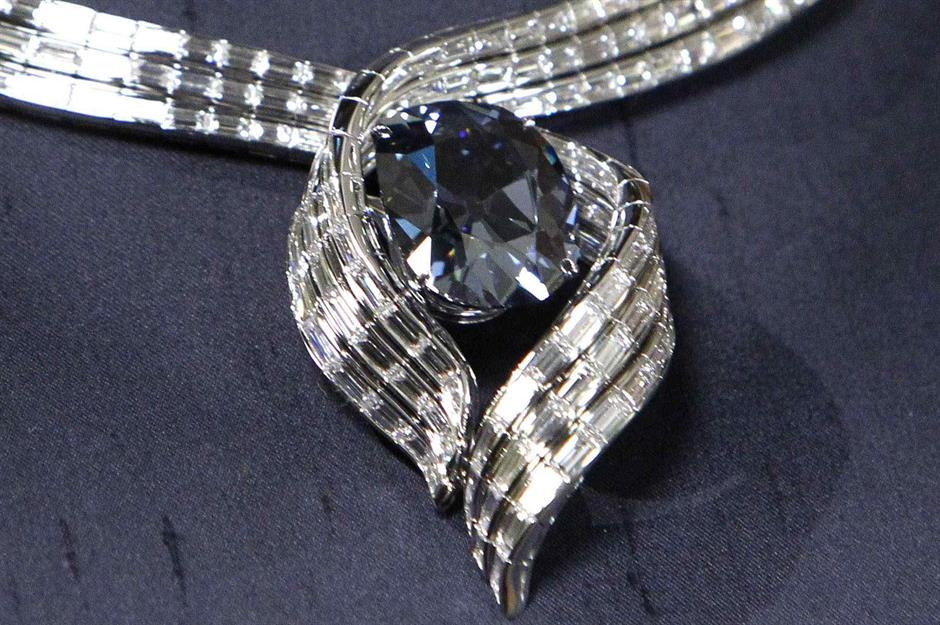
The spectacular Hope Diamond weighs in at 45.52 carats (9.104g) and is worth upwards of $250 million (£196.4m). However, before you start wishing you owned this brilliant blue rock, you should know that it's rumoured to be cursed, with terrible misfortunes befalling many of its owners over the centuries.
According to folklore, the diamond carries a curse due to it being stolen from the Hindu statue it adorned. Other tales suggest the curse could stem from the fact it was mined in the notorious Kollur Mine in India sometime in the 17th century.
The Hope Diamond
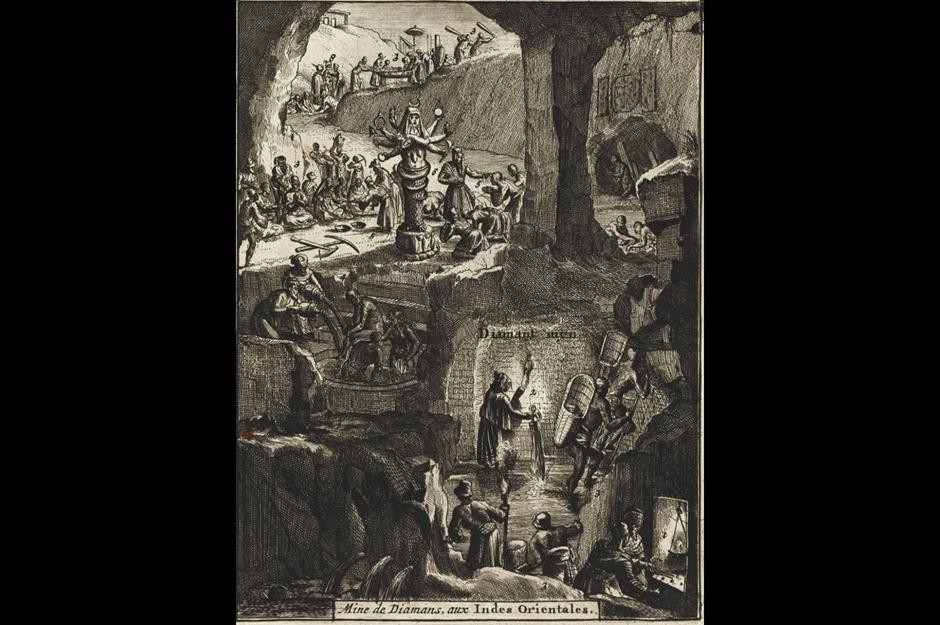
The Kollur Mine (pictured) was one of the country's largest and most productive mines, and operated between the 16th and 19th centuries. At its peak, 60,000 men, women, and children worked in the mine, which was more than half of Kollur's estimated 100,000 population. The mine was owned by the king, with day-to-day operations leased to diamond merchants.
Mining was primitive, labour-intensive and, above all, deadly. Workers wore loincloths, slept in pitiful straw huts, and were usually given food instead of money as payment. The mine walls lacked adequate support and often collapsed during bad weather, killing dozens of men at a time; women and children were able to work above ground, allowing them to avoid this terrible fate.
The Hope Diamond
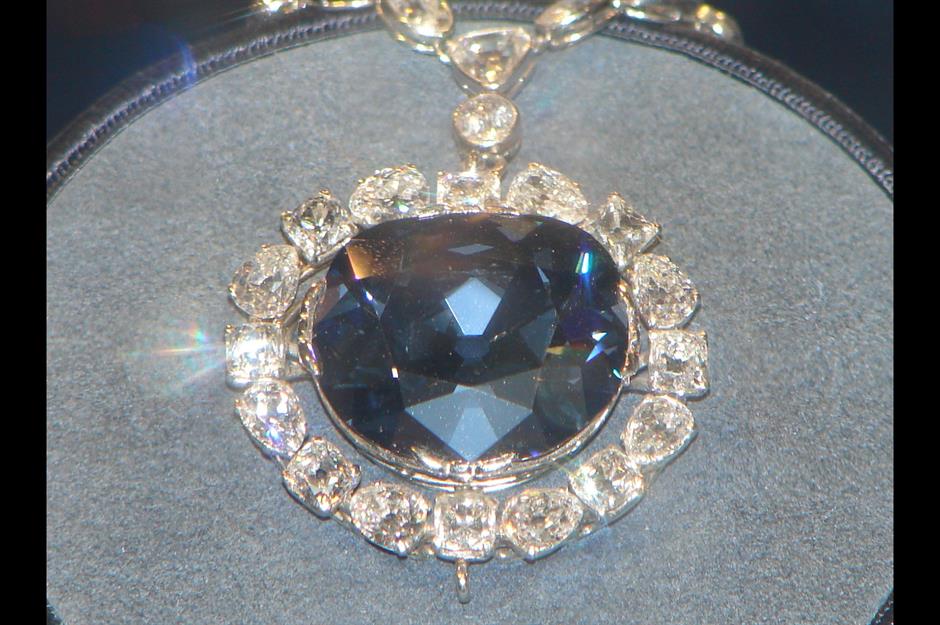
King Louis XVI and Marie Antoinette are the most infamous owners of the stone. The more superstitious might believe the curse of the Hope Diamond struck the French monarch and his queen, who were famously executed by guillotine after being convicted of conspiracy and treason. Subsequently, the diamond, known by then as the 'French Blue', disappeared in 1792, amid looting sparked by the ongoing French Revolution.
The diamond would not be seen again until 1812, when it was discovered to be in the ownership of a London merchant named Daniel Eliason. It was reportedly acquired by King George IV; on his death in 1830, it was sold through private channels to help pay off the king's massive debts.
The Hope Diamond
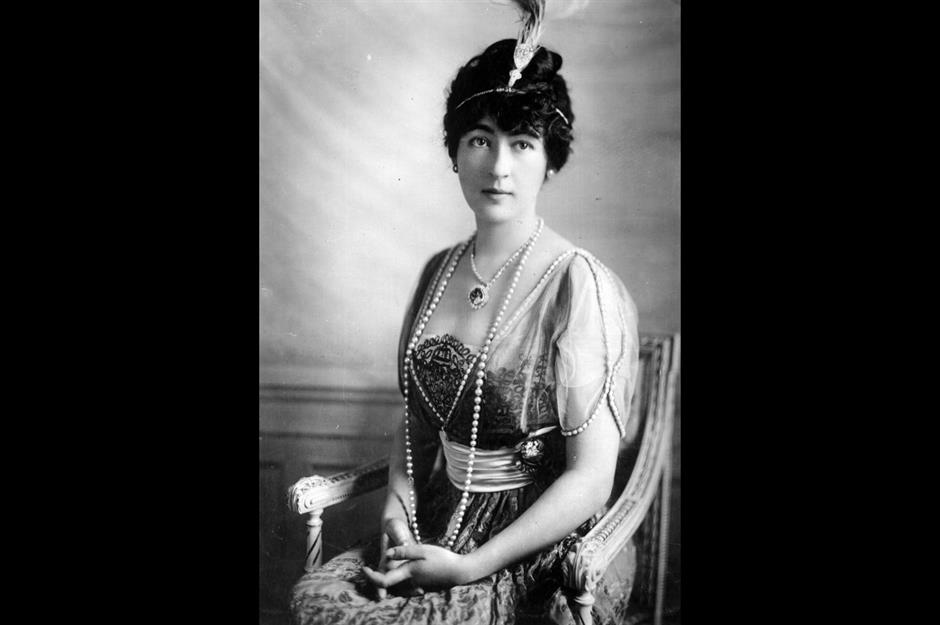
Misfortune continued to befall other recorded owners of the enigmatic Hope Diamond. Evalyn Walsh McLean (pictured), a mining heiress, acquired the blue rock in 1911. Eight years later, her nine-year-old son was killed when he was hit by a car. And tragedy struck again in 1946 when her 24-year-old daughter was found dead after accidentally overdosing on sleeping pills.
The diamond was next purchased in 1949 by American jeweller Harry Winston. Perhaps keen to avoid the alleged curse, he passed it on to the Smithsonian Institution's National Museum of Natural History in 1958, famously paying $2.44 in postage to send it. It's worth noting that the mailman tasked with delivering the precious stone reportedly had his leg crushed in an automobile accident shortly after. That aside, it has remained on display at the National Museum of Natural History ever since, and the curse hasn’t afflicted anyone else – yet!
The Affair of the Diamond Necklace
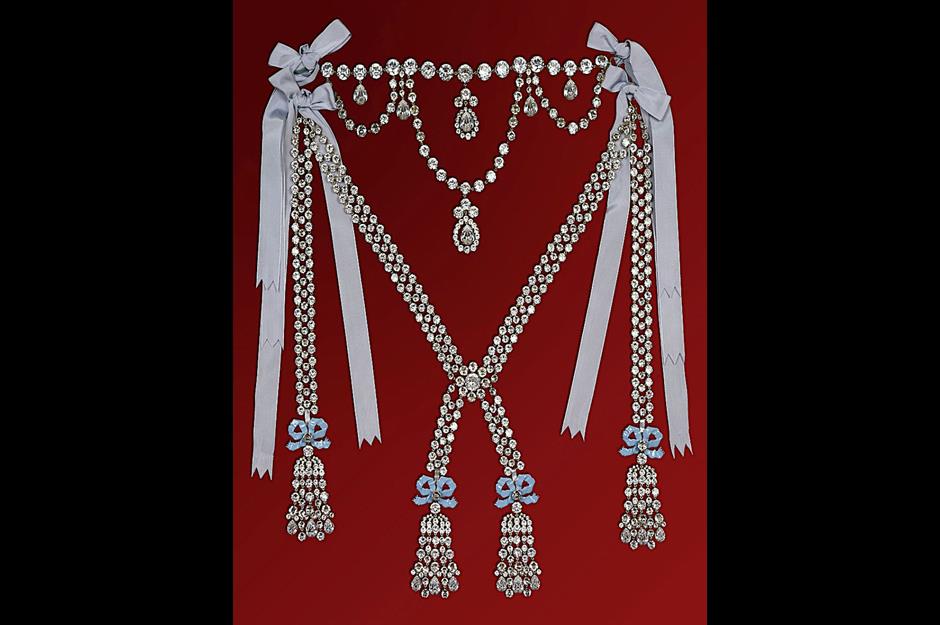
Another piece of finery that has Marie Antoinette at the heart of its story, this extravagant diamond necklace is blamed by some for the downfall and death of the French queen. King Louis XV of France commissioned Parisian craftsmen Charles Auguste Boehmer and Paul Bassange to construct a diamond necklace that would surpass all others in grandeur for his mistress, Madame du Barry. The lavish gift reportedly contained 647 diamonds and, as a result, is said to have cost 2,000,000 livres, or around $21 million (£16.5m) in today's money.
When the king died suddenly in 1774, the necklace hadn't been paid for, leaving its creators on the brink of bankruptcy. They attempted to sell it to the new Queen, Marie Antoinette, numerous times, but she rejected it, reportedly telling them: "We have more need of [ships] than of necklaces."
The Affair of the Diamond Necklace

When Jeanne de Valois-Saint-Rémy (pictured) learned about the existence of the necklace, she devised a cunning get-rich-quick scheme. The self-proclaimed Countess of La Motte was a lowly descendant of the Valois royal family through an illegitimate son of King Henry II. She dreamed of ascending from rags to riches, yet her previous attempts to gain the queen's favour had failed miserably due to her shady reputation. The scheming social climber was forced to turn to criminal methods to get her wicked way.
In 1785, she forged Marie Antoinette's signature to fraudulently acquire the remarkable piece of finery from its makers. La Motte was eventually caught and convicted, but not before deconstructing the necklace and selling the diamonds on the black market.
The diamond necklace affair

By then, the reputation of Marie Antoinette (pictured) was already in shreds due to her lavish lifestyle. Although innocent and ignorant of the whole scam, her subjects suspected she had acquired the necklace but refused to pay for it. Even when she was proven to be blameless, the ordeal only strengthened people's hatred for her, with the so-called 'Affair of the Diamond' further fuelling the French Revolution, which ultimately led to Marie Antoinette's gruesome demise in 1793.
As for the conniving Countess of La Motte? She escaped from a French prison by disguising herself as a boy and fled to England in 1789. She published a memoir titled Memoires Justificatifs de La Comtesse de Valois de La Motte, in which she tried to defend her actions while blaming Marie Antoinette for the scandal.
The Sancy diamond
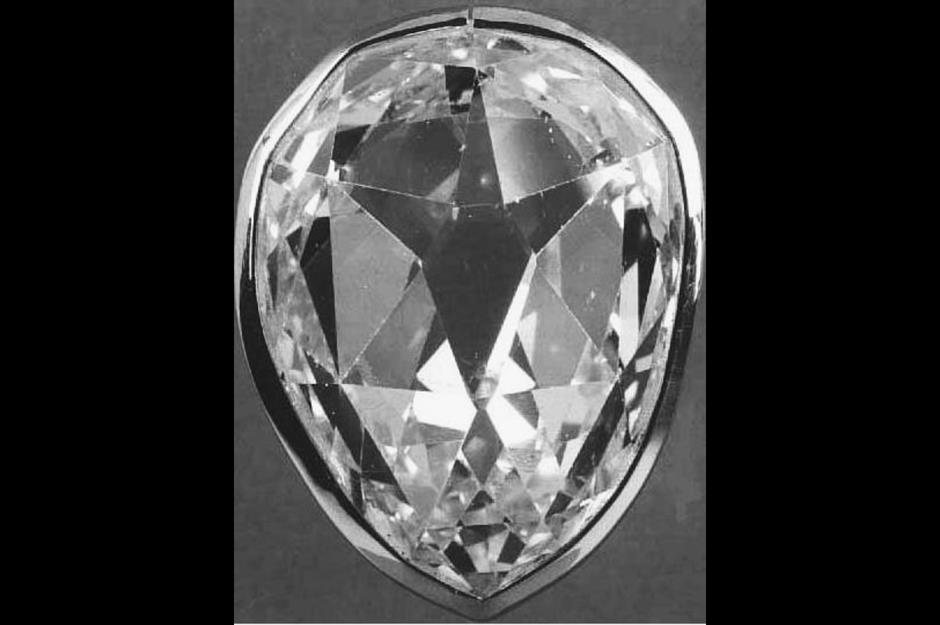
The spectacular Sancy diamond is a pale yellow gem weighing a magnificent 55.2 carats (11g). However, the glistening gem was born from a larger diamond known as the Balle de Flandres, which is reported to have weighed more than 100 carats (20g).
Believed to have been mined in India as early as the 14th century, the Sancy has been used to fund many conflicts throughout its lifetime, with some of its owners believing it would bring them luck in battle.
The Sancy diamond
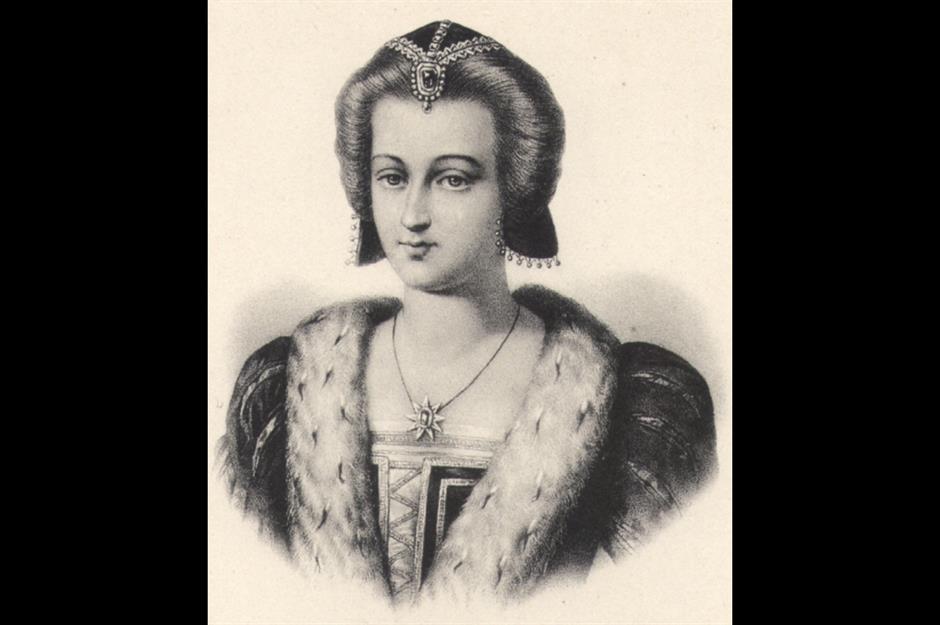
According to early records, the diamond was part of the dowry of Valentina Visconti (pictured), who married Louis I, Duke of Orléans, in 1398. The Duke was the younger brother of King Charles IV of France. When the Duke was killed by Burgundians in 1407, Valentina used the diamond to fund the Armagnac fight against the Burgundians. Following the defeat of the Armagnac, John the Fearless, Duke of Burgundy, claimed the jewel. It remained with the Dukes of Burgundy for several generations.
The Dukes believed the diamond granted them invincibility and hence rode into battle with it. Each time they did, they were triumphant, further fuelling the myth surrounding the stone. When the diamond was lost at the Battle of Grandson in 1476, misfortune swiftly followed, with the following two battles lost. Could the stone have really been a lucky omen?
The Sancy diamond
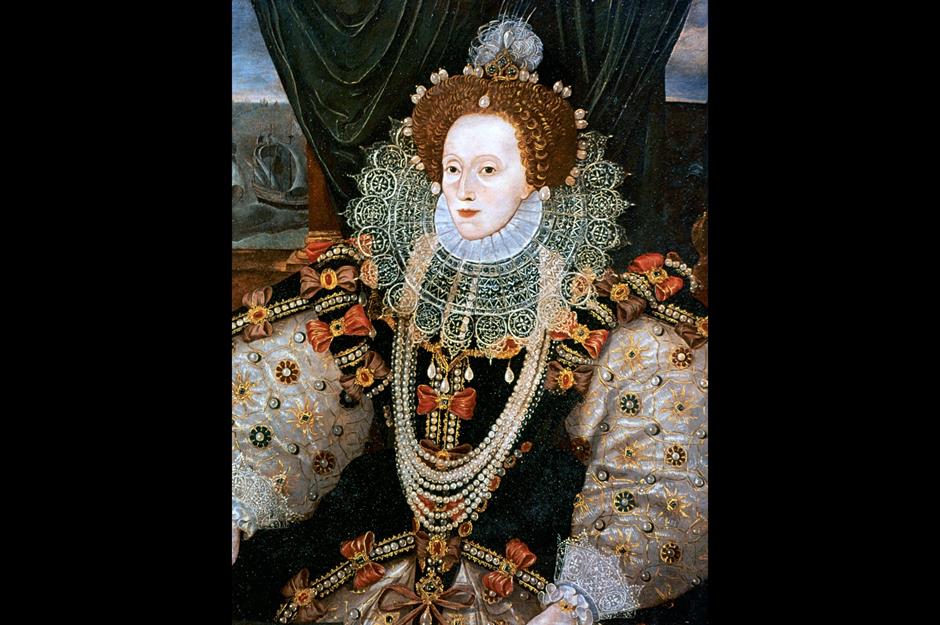
The diamond was cut to its current size by a merchant named Jacob Fugger, before King Manuel I of Portugal took ownership of it in 1477. It was held alongside the Portuguese Crown Jewels until 1580, when Philip II of Spain invaded the nation to take the throne from Antonio de Crato, King Manuel I's grandson.
Defeated, de Crato fled to France with the stone in his possession. To gain support for his claim to the throne, he sold the diamond to Queen Elizabeth I of England (pictured). The Queen would later pawn the diamond to fund a military effort to help the Dutch in their bid for independence against Spain.
The Sancy diamond
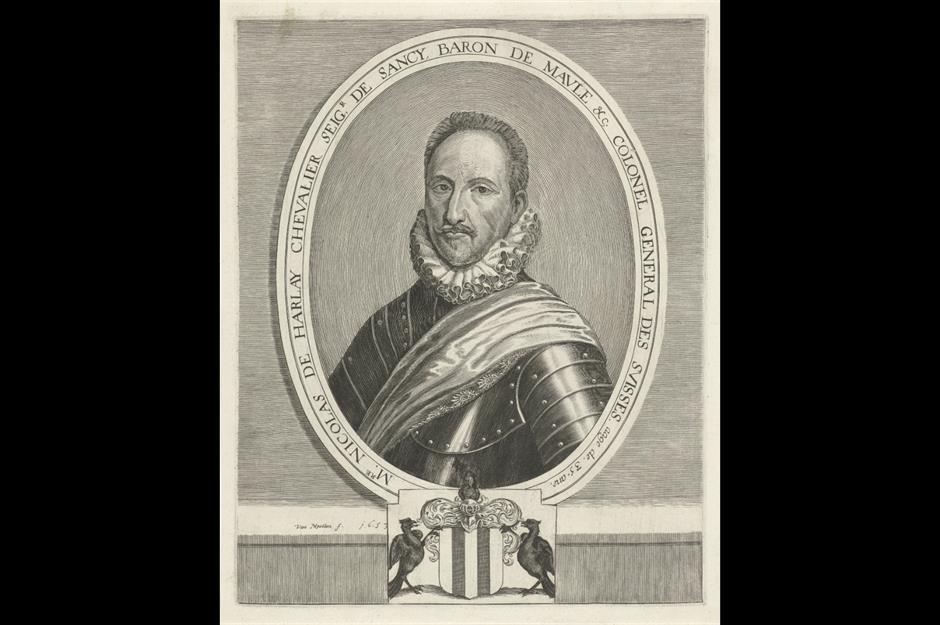
In 1592, a French gem collector called Nicholas de Harlay (pictured), seigneur de Sancy (lord of Sancy), purchased the diamond. It was returned to England in 1604, when a financially-strapped de Harlay sold it to King James I. Following the death of King James in 1625, his son Charles I inherited the Sancy.
Charles gifted it to his new bride, Henrietta Maria. However, just a year later, in 1626, the diamond would again be used to fund a conflict, and was pawned in Amsterdam to finance war efforts against Spain and France.
The Sancy diamond
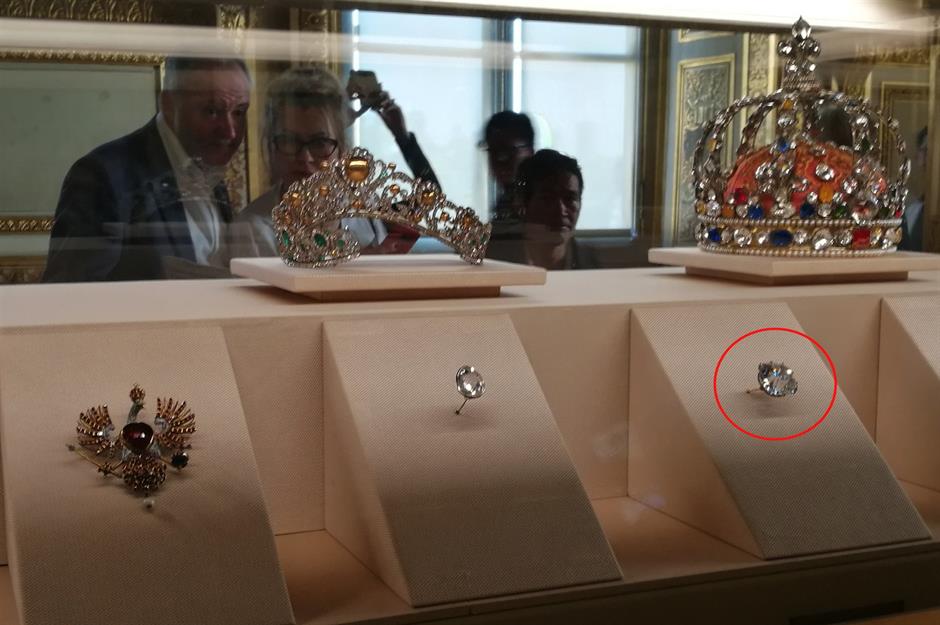
The stone was returned to Britain once again in the 1630s yet had to be pawned to Holland. Mounting tensions between King Charles I and his parliament sparked the potential for yet another war. Following the death of Charles I, the diamond moved into French possession and remained the property of the French monarchy until it was stolen in 1792 during the French Revolution.
The diamond's whereabouts following this event are murky, with historians unable to agree. However, it's known that the Sancy was acquired by Viscount William Astor in 1906. It was passed down through the Astor family for several generations before being purchased by Paris's Louvre museum for $1 million (£741k) in 1978, where it still resides today.
The Regent Diamond
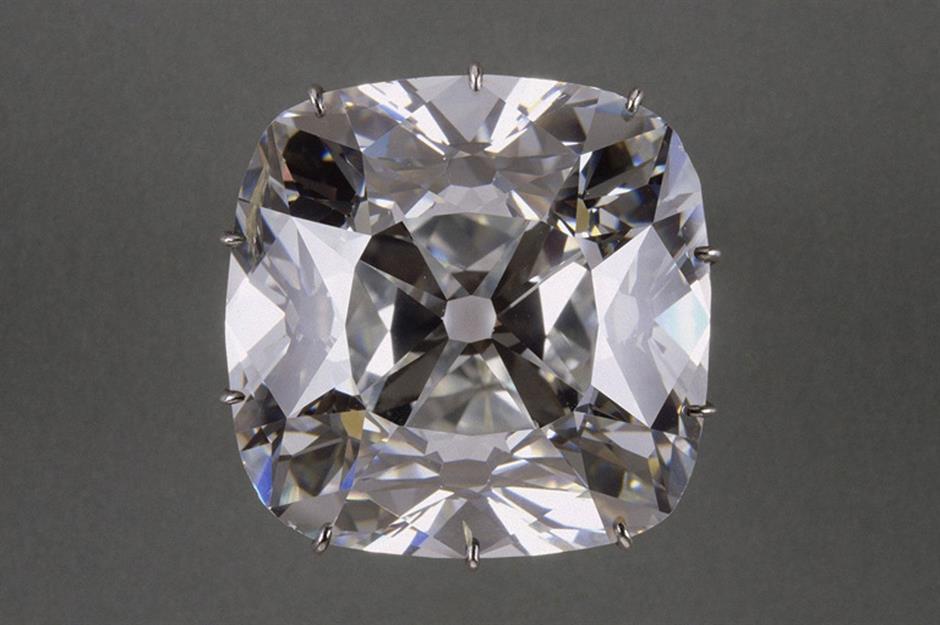
The 141-carat (28g) cushion-cut Regent diamond is breathtaking, but don't let its beauty deceive you. Like many other jewels on our list, it's said to carry a curse.
It's widely believed that an enslaved man mined the diamond in 1698 in India's treacherous Kollur Mine. Awed by the size of the stone, he reportedly concealed it inside an open wound on his leg, in the hope of later selling it. Unfortunately, however, this isn't an uplifting rags-to-riches tale. Rather, a ruthless British sea captain learned about the diamond, murdered the slave, and stole the stone. The captain then sold his stolen treasure to an Indian merchant.
The Regent Diamond
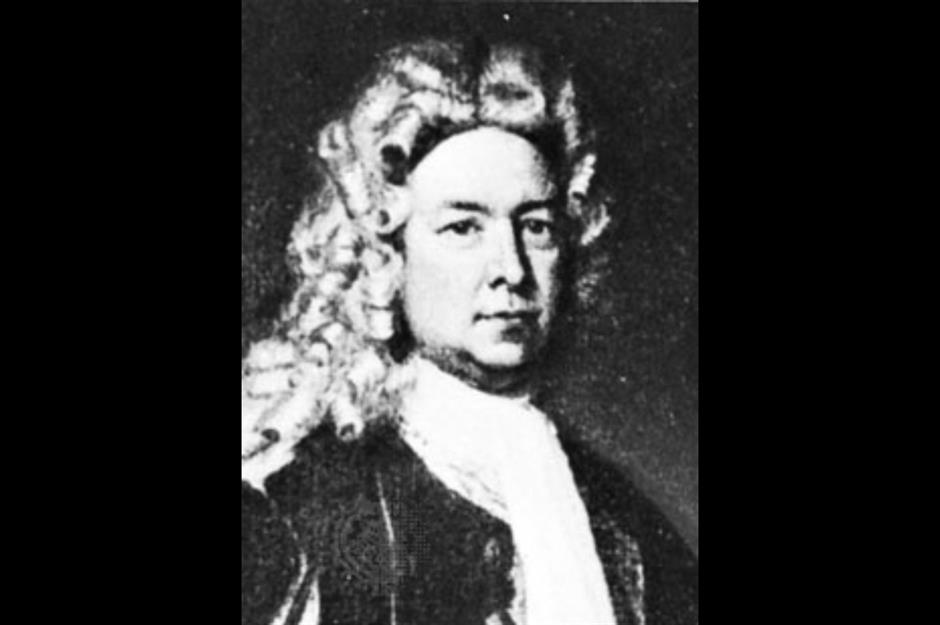
The stone was then purchased by Thomas Pitt, a British merchant, in 1701, which is why it's sometimes referred to as the 'Pitt Diamond'. Pitt reportedly bought the diamond for 48,000 pagodas (the currency of a variety of Indian dynasties at the time; it equates to $4.7 million, or £3.5m, in today's money) and had it cut into 141 carats.
Pitt attempted to sell his diamond to several European royals but there was limited interest. He eventually sold the stone in 1717, selling it to Philippe II, Duke of Orléans for the equivalent of around $28 million (£20.7m) in today's money.
The Regent Diamond
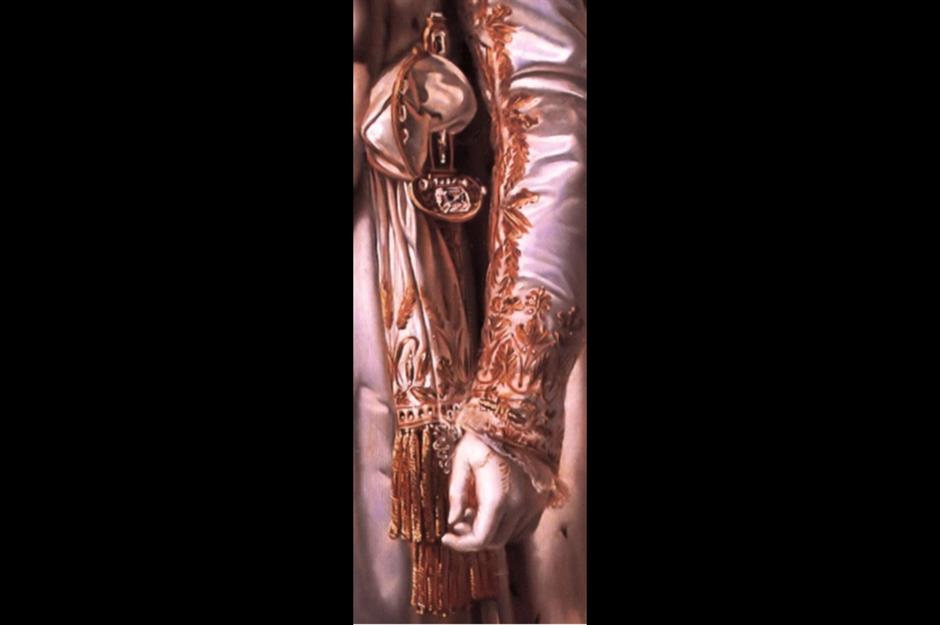
The diamond made its way to the French royal family, where it was set into Louis XV's coronation crown in 1722, and then later reused in Louis XVI's crown in 1775. It was then worn by Marie Antoinette, who treasured it until her death. Along with the majority of the French Crown Jewels, the diamond disappeared due to looting carried out during the French Revolution.
The diamond was later discovered in a Parisian attic, and acquired by Napoleon Bonaparte in 1801. He mounted it to the hilt of his sword, as depicted in this painting by the prolific French artist François Gérard. The gem then changed hands between several French rulers.
The Regent Diamond
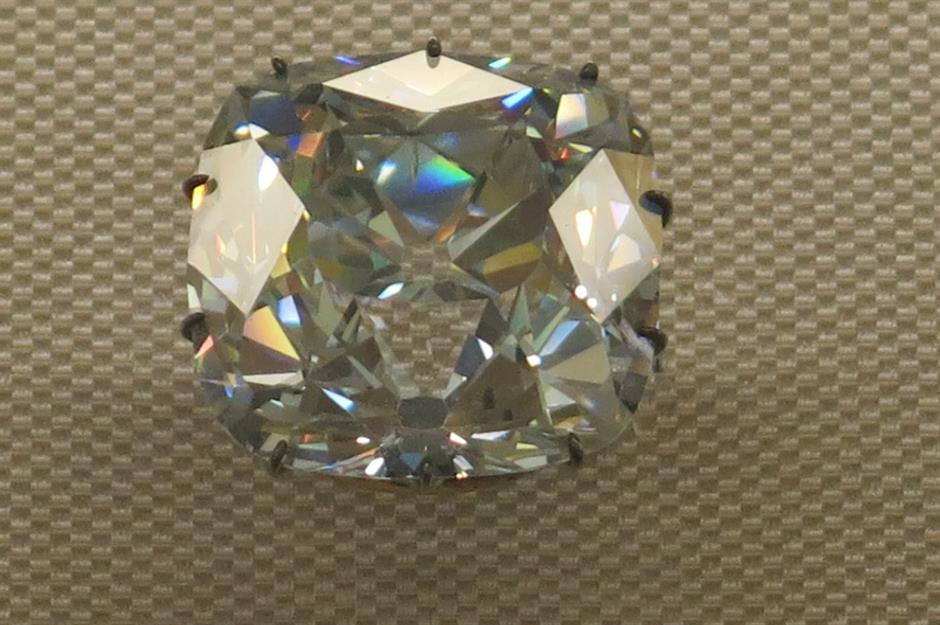
The misery that has befallen several of the Regent's royal owners has added fuel to the fire surrounding the curse: Louis XVI and Marie Antoinette were executed; Napoleon was exiled and died of cancer; Louis XVIII was exiled twice; Charles X was forced to abdicate his throne, and Napoleon III died in exile.
Today, the Regent is the property of the French government and resides in the French Royal Treasury at the Louvre, where it’s been on display since 1887. The rock is now said to be worth a staggering $61 million (£47.9m).
The Black Orlov
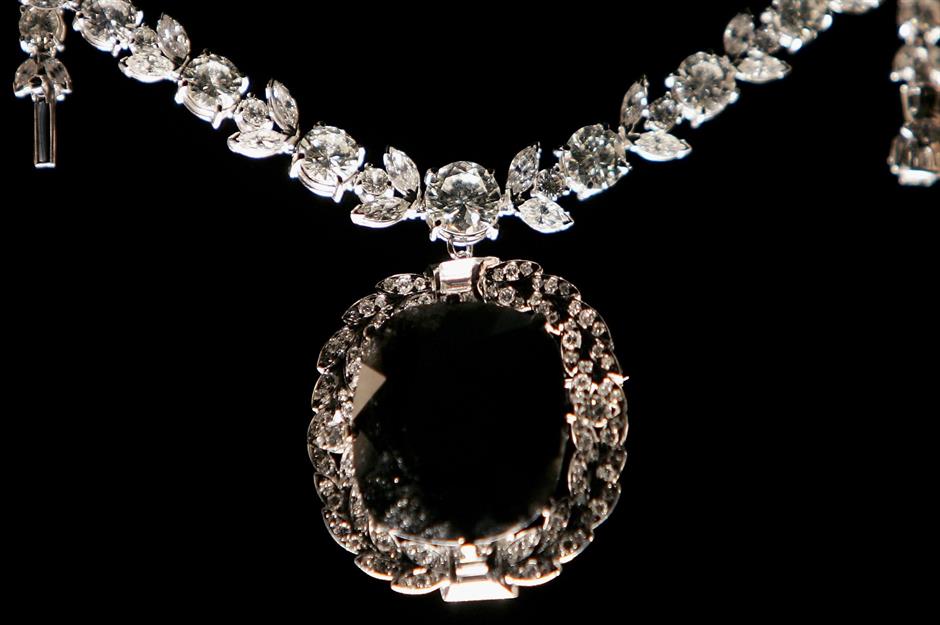
A diamond that compels its owners to jump to their deaths might sound like the premise of a bizarre horror film, yet that is exactly what the Black Orlov is alleged to do. The 'cursed' stone weighs an extraordinary 67.5 carats (13.5g), making it one of the largest black diamonds on record.
According to legend, a monk stole the stone from the eye of a Hindu statue in Pondicherry, India, which awoke the curse. However, this story should be taken with a pinch of salt because black diamonds are uncommon in India, so its exact origins are unknown.
The Black Orlov
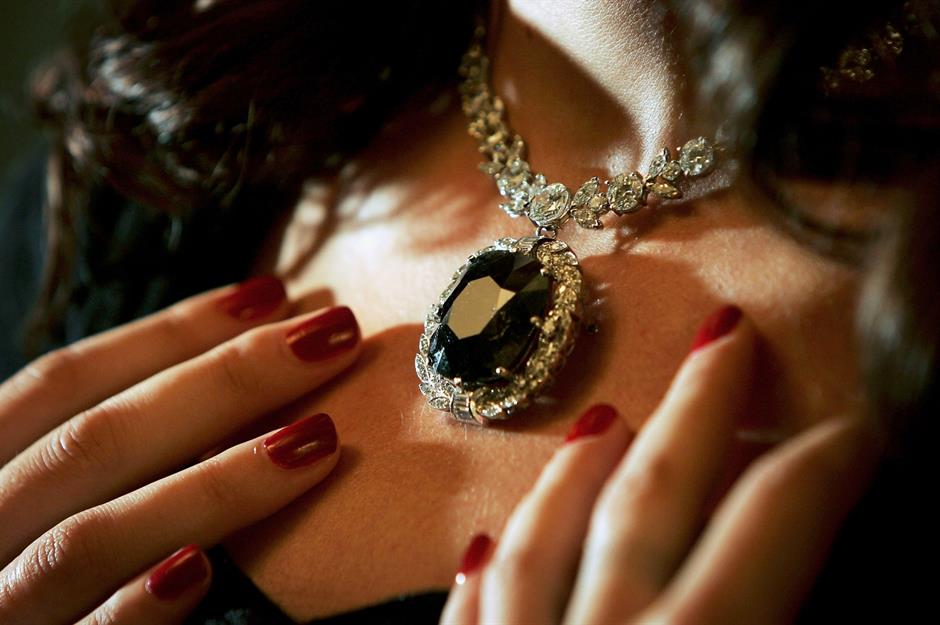
It's said that diamond merchant J.W. Paris brought the diamond to America in 1932 to sell it. However, shortly after arriving, he took his own life by jumping from a skyscraper in New York. While tragic, this incident isn't enough to cause alarm. The plot does, however, thicken...
It then fell into the hands of two Russian princesses, Leonila Galitsine-Bariatinsky and Nadia Vygin-Orlov, the latter being the namesake of the stone. Both women supposedly took their own lives by jumping to their deaths several months apart in the 1940s. It's worth noting that there is no record of these events, simply adding to the mystery surrounding the diamond.
The Black Orlov
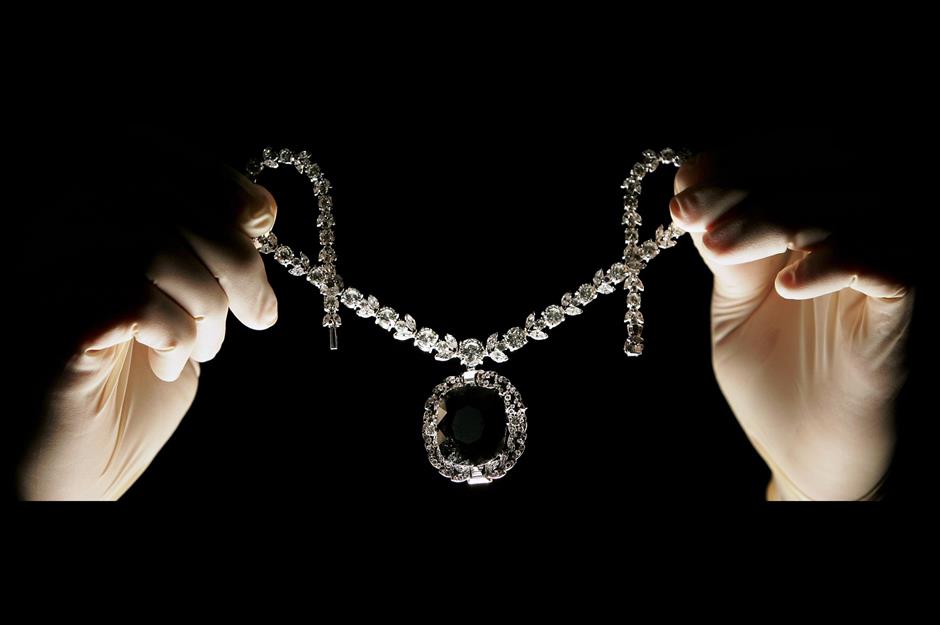
The diamond, which was originally 195 carats (39g) in size, was subsequently reported to have been split into three parts by an Austrian cutter, which transformed it into the 67.50-carat cushion-cut stone it is today. However, it's unknown when this occurred, or even what happened to the other two parts. The 67.5-carat Black Orlov, however, was set in a 108-diamond brooch that was strung from a 124-diamond necklace.
The necklace was acquired in 2004 by diamond dealer Dennis Petimezas and has since been on display at the American Museum of Natural History in New York City, as well as at the Natural History Museum in London. Petimezas has stated that he was "pretty confident" that the Black Orlov curse, if there was such a thing, has been broken.
The stolen blue diamond
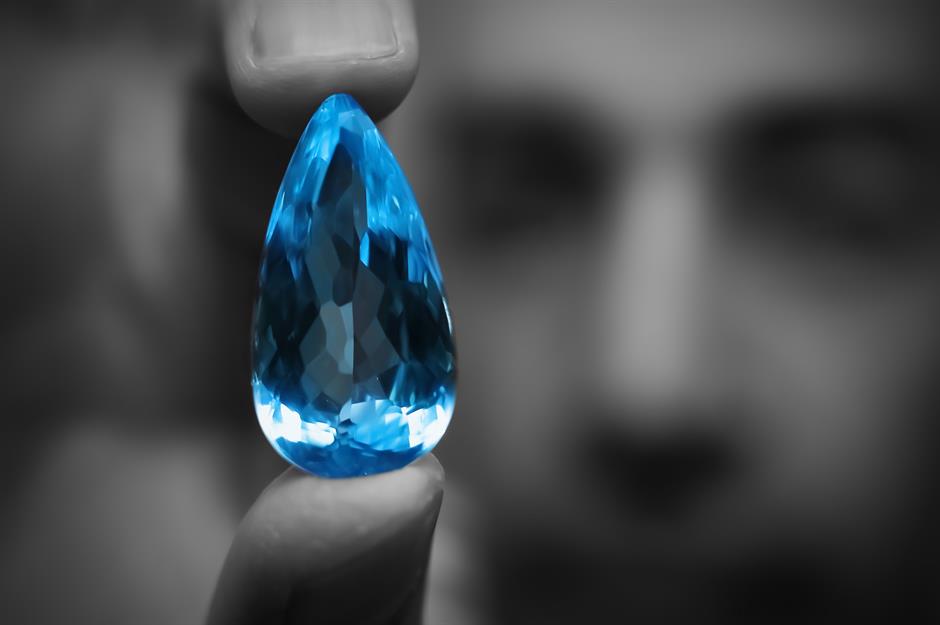
If you enjoy tales with a touch of thievery, murder, and kidnapping, this story will surely enthral you. In 1989, a Thai gardener named Kriangkrai Techamong was working in the palace of Prince Faisal bin Fahd of Saudi Arabia. As the Prince vacationed, Techamong started to steal jewels from the royal residence by hiding them in vacuum cleaner bags, with a 50-carat blue diamond (similar to the one pictured) among his spoils.
Techamong fled to his home country of Thailand with the loot, which weighed in at around 200 pounds (90kg) in total but, given the high-profile nature of his crime, he struggled to sell the jewels. As a result, he sold them at highly discounted prices to Santhi Sithanakan, a gem dealer.
The stolen blue diamond

Thai police apprehended the thief and recovered the jewellery, with Police Lieutenant-General Chalor Kerdthest travelling to Saudi Arabia to personally hand over the stolen riches to Prince Faisal bin Fahd (who is pictured here).
However, things took an unexpected turn when the Prince discovered that the returned stones were actually fakes, and that the valuable blue diamond was still missing. The House of Saud dispatched a delegate to Bangkok to investigate but he mysteriously disappeared. In Bangkok, four more Saudi officials were murdered. The Saudis concluded that Thai police had switched the treasures and replaced them with forgeries, with suspicions growing when the wives of Thai officials were spotted wearing diamond necklaces.
The stolen blue diamond

Things took an even more sinister turn in 1994, when the gem dealer who purchased the goods from the gardener was kidnapped, and his wife and son were murdered. Police Lieutenant-General Chalor Kerdthes was found guilty of the heinous crime and sentenced to death, though King Bhumibol Adulyadej (pictured) reduced his sentence to 50 years of imprisonment instead.
The fabled blue diamond was never recovered – some even question whether it ever existed at all. As a result, Saudi Arabia severed diplomatic relations with Thailand, and the relationship remains tense today. As for the thieving gardener, he was imprisoned for almost five years and, upon his release, pledged to became a monk to atone for his crime.
Tiffany Yellow Diamond

Beyoncé and Jay-Z were unveiled as Tiffany & Co.'s new faces in August 2021, with Beyoncé dazzling fans by wearing the famous Tiffany Yellow Diamond in the campaign photos. Queen Bey is just the fifth person to wear the 128.5 carat (25.7g) rock, following in the footsteps of Audrey Hepburn, Lady Gaga, and Gal Gadot, as well as the 20th-century socialite Mrs. E. Sheldon Whitehouse.
As Beyoncé was the first Black person to wear the diamond, Tiffany vowed to donate $2 million (£1.6m) to historically Black colleges and universities. However, the gesture was overshadowed by the diamond's dark past, as it's considered to be a symbol of British colonialism in Africa.
Tiffany Yellow Diamond
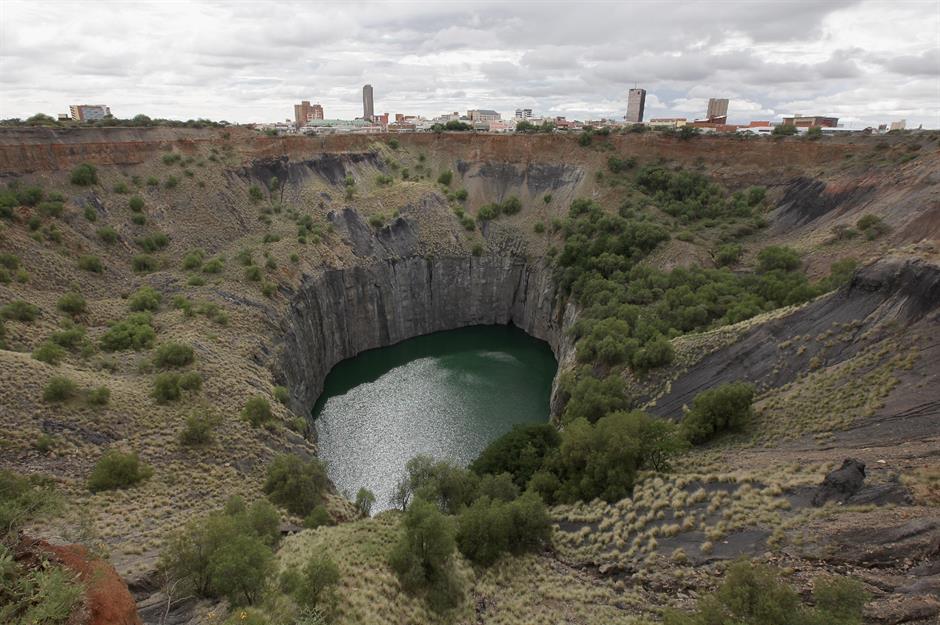
The diamond was unearthed in South Africa's notorious Kimberley mine in 1877, and subsequently sold to Charles Lewis Tiffany. who founded Tiffany & Co. in 1837. The Kimberley mine, known as 'Big Hole', is often described as the largest diamond mine to have been dug by hand.
It has a surface of 170,000 square metres (42 acres) and is 1,519 feet (463m) wide. It was dug to a depth of 788 feet (240m). From July 1871 through to 1914, around 50,000 miners used picks and shovels to dig the pit, reportedly yielding around 13.6 million carats of diamonds.
The Tiffany Yellow Diamond
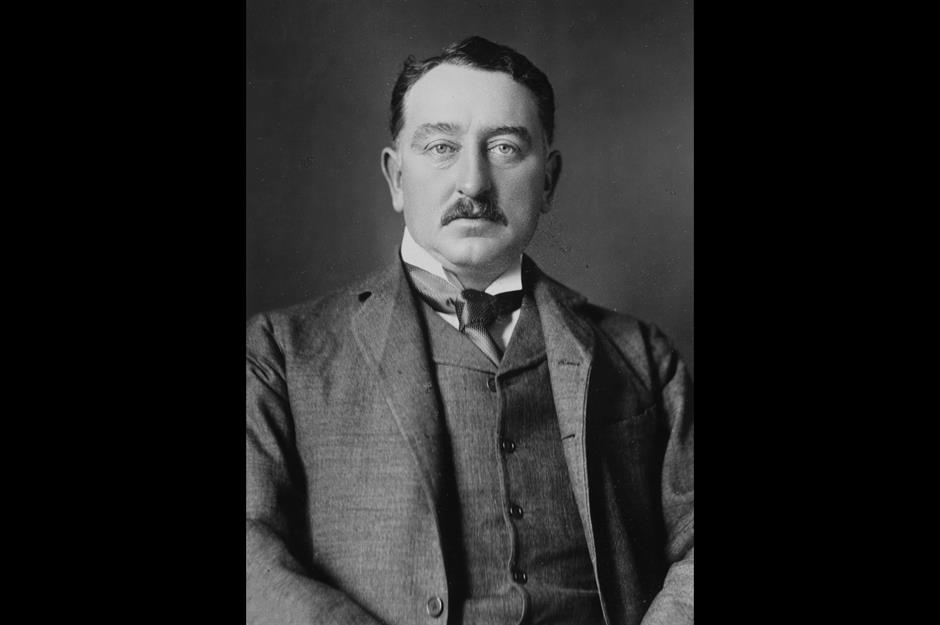
Many of the miners were Black people who had been forced to migrate to Kimberley for work when White farmers drove them off their land. Working conditions were slave-like, and many perished in the pit due to mining accidents.
Unsanitary conditions, a shortage of food and water, and extreme heat also added to the death toll. Workers endured gruelling 12-hour shifts for the profit of the De Beers diamond corporation, which was founded by British businessman Cecil Rhodes (pictured) in 1888.
The Tiffany Yellow Diamond
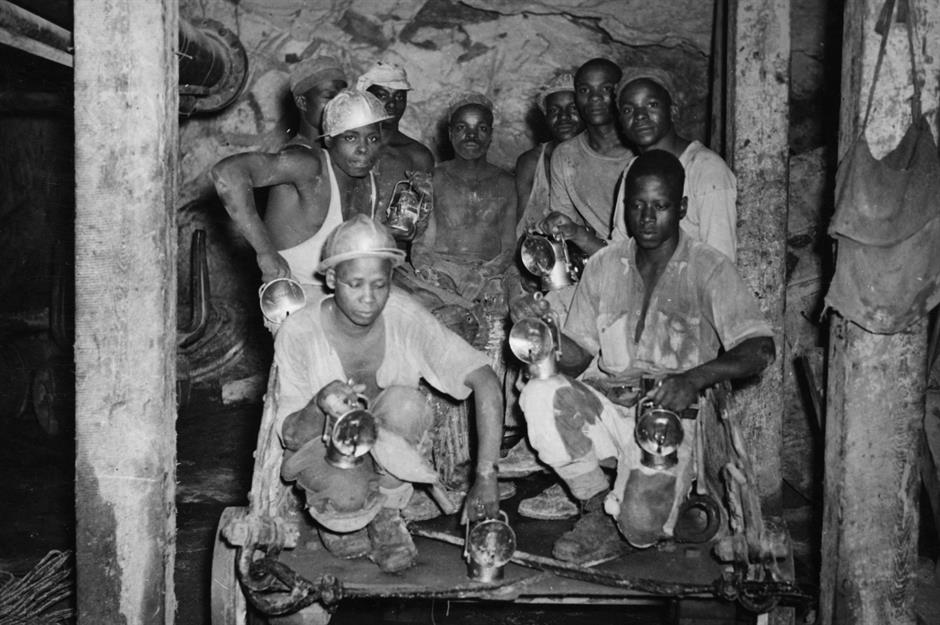
The region is also renowned for its blood diamonds, also known as "conflict diamonds". These are diamonds mined in areas controlled by rebel soldiers, typically opposed to the government. The diamonds are sold by the rebels, with the profits used to finance further conflict and war.
Blood diamonds are regularly mined using the unpaid labour of men, women, and even children, who have been kidnapped during shipping or acquired by attacking legitimate mines. The diamonds are then smuggled out of the country and sold as conflict-free rocks.
Pictured: A group of workers in a Kimberley-based mine in 1939.
The Tiffany Yellow Diamond

The United Nations created the Kimberley Process Certification Scheme (KPCS) in 2003, in a bid to prevent blood diamonds from entering the mainstream market. However, humanitarian groups have questioned the KPCS, claiming it has not done enough to eradicate human rights concerns from the diamond production chain.
In 2017, IMPACT, a non-profit organisation that campaigns against blood diamonds, said that the KPCS had failed in its mission.
The Tiffany Yellow Diamond

Circling back to Beyoncé, a source close to the star told tabloids that Beyoncé was angry and disappointed to learn that the $30 million (£23.6m) Tiffany rock was a blood diamond. Despite this, the singer has since been photographed wearing the necklace, which has sparked outrage.
In an online post, Beyoncé's mother Tina Knowles-Lawson defended her daughter, slamming "socially conscious activists" as hypocrites and claiming that many of them had likely owned diamonds without knowing their origin. Fans also defended the singer, claiming that when Lady Gaga (pictured wearing the necklace in 2019) and Gal Gadot wore the necklace, it did not cause controversy, with racism cited as the reason that Beyoncé had received backlash.
Now discover some priceless treasures that might actually be fakes
Comments
Be the first to comment
Do you want to comment on this article? You need to be signed in for this feature